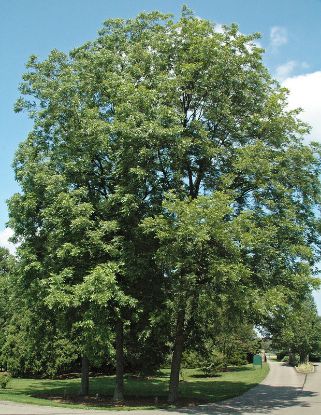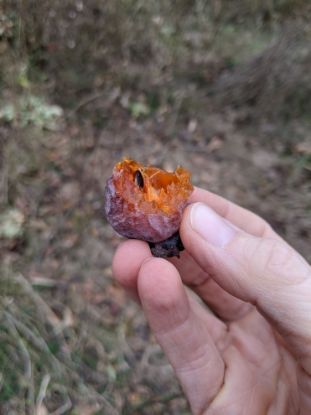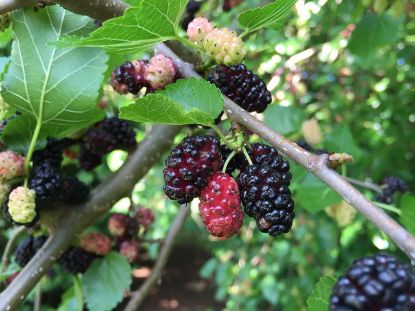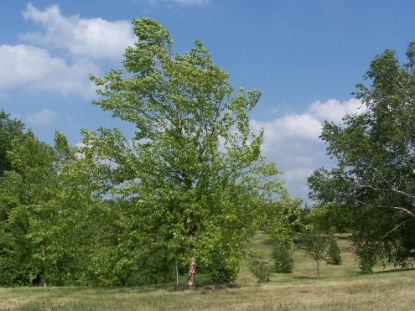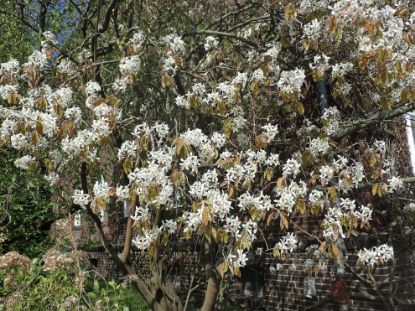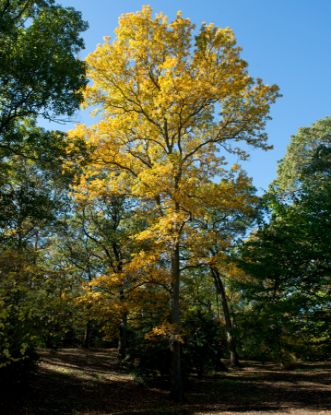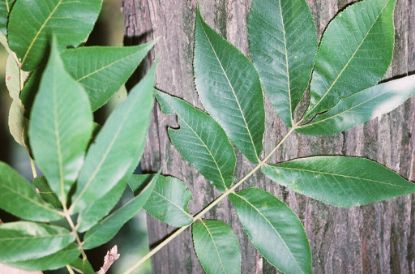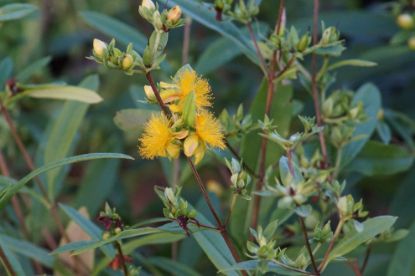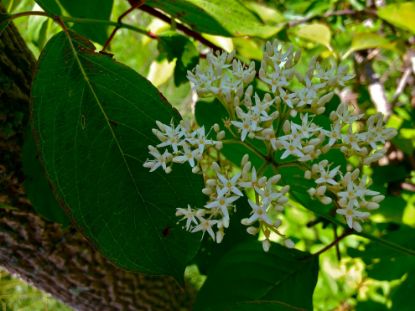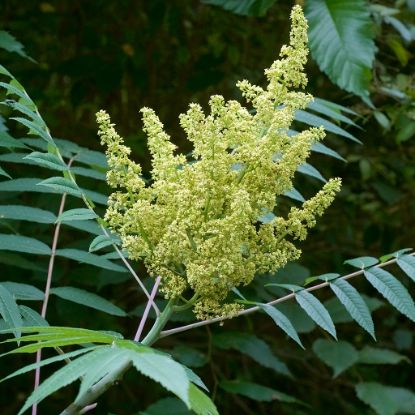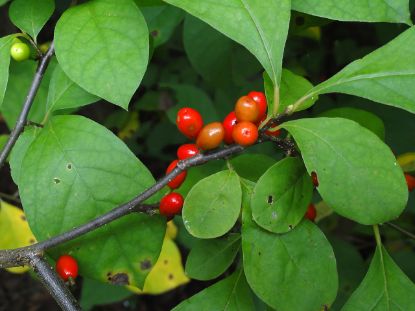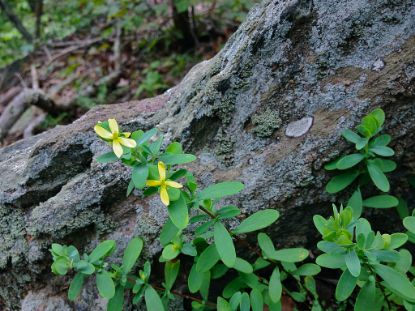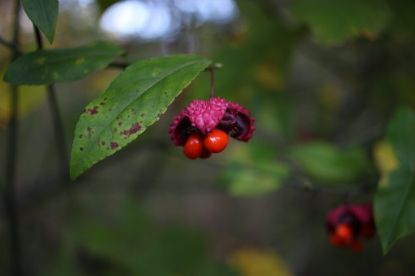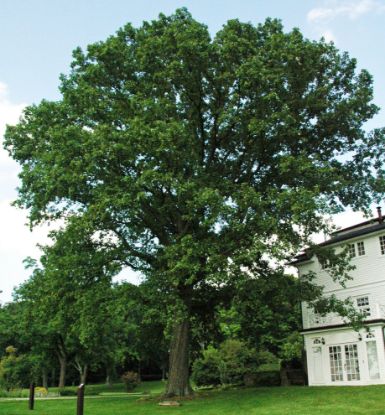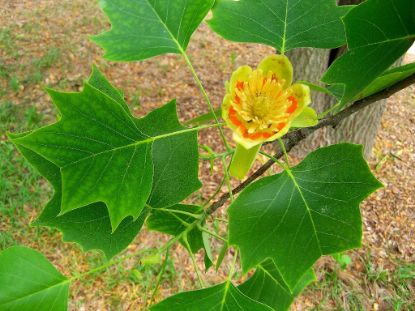Filter by attributes
Shrubs and Trees
Sort by
Display
per page
View as
49 products found
Pecan (Carya illinoinensis)
A beautiful, large shade tree that produces delicious nuts enjoyed by humans and lots of wildlife. Best grown in rich soil. May take 10 years before produces nuts. Kansas City is at it's northern range so may not produce nuts during a late, cold spring. P
I'm sleeping right now. See you in the spring.
From $14.00
Persimmon (Diospyros virginiana)
A delicious native fruit (as long as you get a ripe one and beat the wildlife to them). Need a male and female plant to bear fruit; we can't guarantee gender.
I'm sleeping right now. See you in the spring.
From $14.00
Red Mulberry (Morus rubra)
Delicious fruit in early summer on female plants enjoyed by humans, birds, and mammals. Fruits create purple stains where they land so best planted further away from the home. May take 10 years for fruit to produce. Yellow fall leaves.
Out of stock
From $6.00
River Birch (Betula nigra)
Beautiful peeling bark makes this a wonderful statement tree. Beautiful yellow fall leaves. This tree provides garden interest in every season. Often trained to be multi-trunked in landscapes. Fast growing. Can be kind of messy with fallen twigs.
I'm sleeping right now. See you in the spring.
$14.00
Serviceberry (Amelanchier arborea)
Delicious edible red berries ripen in June. Supports several insects, birds, and mammals. Red fall leaves.
I'm sleeping right now. See you in the spring.
From $14.00
Shagbark Hickory (Carya ovata)
The Carya genus supports 200 butterfly and moth species (including rare Hickory Hairstreak Butterfly), nuts are eaten by lots of wildlife (including humans), and Tracy's favorite feature is that bats can roost under the shaggy bark.
Out of stock
$14.00
Shellbark Hickory (Carya laciniosa)
A fantastic tree for wildlife - insects, birds, mammals (including bats). Even humans can eat the nuts (which the tree takes 40 years to produce). Large, slow growing, strong tree. Plant this tree for the next generation.
I'm sleeping right now. See you in the spring.
$14.00
Shrubby St. John's Wort (Hypericum prolificum)
A rounded shrub with a more formal shape with beautiful flowers that attract many pollinators. Can tolerate many soil conditions but better in well-drained soil in hot and humid conditions.
I'm sleeping right now. See you in the spring.
From $6.00
Silky Dogwood (Cornus amomum)
Blue fruit ripen in August and are eaten by many species of wildlife. May form a thicket.
Out of stock
From $14.00
Smooth Sumac (Rhus glabra)
Fast growing, thicket-forming shrub with beautiful, bright red berries on female plants, and bright red fall foliage. Supports several insects (including the Red-banded Hairstreak) and birds.
I'm sleeping right now. See you in the spring.
From $6.00
Spicebush (Lindera benzoin)
Host the spicebush swallowtail. Male & female flowers on separate plants; male flowers showier while female flowers produce red berries in fall (plant sex not determined at time of sale). Beautiful yellow fall foliage.
I'm sleeping right now. See you in the spring.
From $12.00
St. Andrew's Cross (Hypericum hypericoides)
A short, semi-evergreen shrub, adaptable to many sun and moisture conditions with nice foliage texture. The dark stems also give a nice color contrast to the leaves.
I'm sleeping right now. See you in the spring.
$6.00
Strawberry Bush (Euonymus americanus)
A suckering shrub that spreads by rhizomes into a hedge. Has unique flowers that are rarely noticed and very cool fruit capsules that stand out in early fall. Nice red fall leaves.
I'm sleeping right now. See you in the spring.
$14.00
Swamp White Oak (Quercus bicolor)
Stately hardwood tree that can handle wet feet and droughts. Oak trees support the most number of Lepidoptera species in the Eastern US
I'm sleeping right now. See you in the spring.
From $14.00
Tulip Tree (Liriodendron tulipifera)
Tall, straight, fast-growing tree. Shallow rooted, plant with deep-rooted plants. Host of the Eastern Tiger Swallowtail butterfly. Will sprout numerous seedlings in spring.
Out of stock
$14.00
